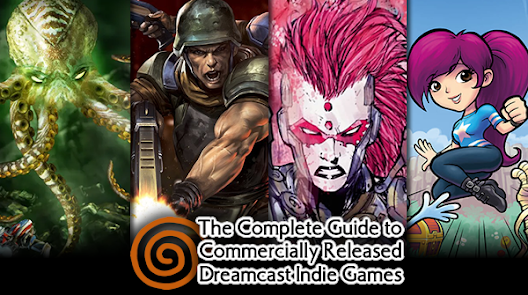Last month, the Junkyard office was abuzz with excitement when we caught wind of the news that Fragmented Almanac, a compilation of two eerie narrative-based puzzle games, was soon due to be released by fledgling indie studio ANTIRUINS on our beloved Sega Dreamcast. Alas, we don't actually have an office (yet), but the flurry of activity on our Discord and WhatsApp channels did a commendable job of emulating an exuberant water cooler experience nonetheless.
The duo of games contained within the Fragmented Almanac wrapper, The Hideout and Summoning Signals, have been in gestation for many years now, and whenever we had the opportunity to sample the work-in-development, our appetites for more only grew. At times it looked like the projects were sadly destined to join the extensive list of cancelled Dreamcast games, and so it was particularly sweet to hear that they are in fact now complete, and due for both physical and digital release in March of 2024.
Of course, after a lengthy session ogling the artsy ANTIRUINS website, I only wanted to learn more. Fortunately, lead developer Roby Provost has been kind enough to spill the beans in the following interview that covers everything from the conceptual foundations of Fragmented Almanac, down to the nuts and bolts of the game's printing and distribution. To put the cherry on top, Roby also provided us with a new teaser trailer that we are delighted to reveal for the first time here on the Junkyard.
* * *
DCJY: Thanks for taking the time to speak with us Roby. To kick things off, can you tell us what players should expect from The Hideout and Summoning Signals, the two games that are being released together as Fragmented Almanac?
Roby: They are quite unique games. They're not shmups, that's for sure! I honestly think that Fragmented Almanac might be one of the most polished indie Dreamcast releases we've seen so far. As I tried to explain on our website, it is at the intersection of video game, art and alchemy. It's a game that makes you dream, or at the very least, makes you think. We wanted to make a project that lingers in the back of your mind, trying to decode the meaning of "scroll". The whole release is designed like a puzzle: full of secrets, truths and symbols.
This being said, they are not long games. We wished we could have made the full version of Reaperi Cycle, a game which The Hideout was initially a demo of, but it was way too ambitious - especially when we first started back in 2016. Still, we think that people who enjoy strange, narrative-driven games with some puzzles will enjoy Fragmented Almanac. It's definitely a unique proposition, as games like Seaman or Seventh Cross Evolution were. Of course, I really think Seventh Cross Evolution could have been way better. Maybe we'll have to make Eighth Cross Evolution one day 😉.
And if you had to categorise them by genre, would it be fair to say they are "point-and-click" adventures, or is that too restrictive?
I honestly struggle to find the proper term for these games! You don't even click to move around, so perhaps it's more like a cursor adventure? But even that doesn't have a great ring to it. Maybe they are puzzle games? Strange, narrative-based puzzle games?
Whatever they are, they have a distinctive eerie and mysterious style. What is the inspiration behind that?
I think eerie and mysterious is just in our DNA! More seriously, most of the inspiration for our games is drawn either from ideas of the past, or visions of the future - and in particular, things that have been forgotten or that are not bound to happen. The concept of the almanac, a book or document that predicts the time, felt like a great starting point. It's interesting to think about what motivated the creation of almanacs. Were their authors trying to create a system to anticipate the future? Were they trying to provide a guide, a sense of security? Some almanacs are based on the words of religious texts while others get their predictions from the stars. It was interesting to research the many forms that almanacs take, both visually and in the information we provide.
For us, the Almanac is used to somewhat guide and inform the player. As you play the game, you'll unlock fragments and access more lore and art from the game. Muet (Simon Chiasson Greffard), one of our team members, is the one who infused The Hideout with most of its alchemical philosophies. We dug deep within alchemical imagery and symbols and tried to craft something out of it.



















































